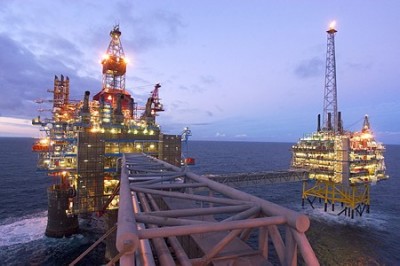Oil prices will rise, Norway’s krone will regain strength, unemployment will top out and housing prices will shoot up even higher. That’s the overall outlook for 2017 by 30 leading Norwegian economists, who think workers and employees can probably expect a better year ahead.

Newspaper Dagens Næringsliv (DN) published results on Tuesday of a survey in which the economists generally agree that the Norwegian economy is already beginning to turn around. The worst of the shock of the oil price collapse in 2014 seems to be over.
Even executives at some of the hardest hit companies in the oil and offshore business see signs of an upturn. “We think 2017 will be the year we hit bottom, that’s what we’re rigging for,” Mikael Johansen of Westcon Yards Florø told DN. After an extremely tough autum, cautious optimism is returning to many companies in the southwestern part of the country that’s long been home to many oil and offshore firms.
It’s the developments in the oil price and the Norwegian currency, the krone, that still create the greatest uncertainty but recovery seems to be underway. After falling from well over USD 100 a barrel in 2014 to as low as USD 27 at this time last year, the price of a barrel of Norway’s North Sea crude was back up at more than double that level this week (USD 56.82 Tuesday morning). Efforts are underway to restructure Norway’s economy, to make it less vulnerable to oil price swings, but the value of the country’s biggest export remains critical.
As oil and offshore companies have worked to bring their costs more in line with lower oil prices, their bottom lines are improving. “We’ve taken out the capacity from the bonanza years of 2013-2014,” Tore Medhus of SR-Bank in Stavanger told DN. Now the average prognosis of the 30 economists surveyed by DN suggests business activity will rise in 2017, compared to 2016. They expect, on average, the economy to grow by 1.5 percent next year, more than twice the rate forecast by Norway’s central bank and state statistic bureau SSB.
Not everyone is so optimistic. Knut Anton Mørk, who worked as chief economist for Handelsbanken for more than 20 years before becoming a professor at NTNU in Trondheim, expected the lowest growth rate of just 0.5 percent, compared to 2 percent by some of his colleagues. “We must expect many surprises (in 2017), especially political,” Mørk told DN, referring to the parliamentary election in September. He also notes that problems for the oil and offshore sector are not over and that the world economy may stagnate.
The Oslo Stock Exchange, however, got off to a brisk start on the first trading day of the year on Monday. Much of its 1.12 percent rise was attributed to Telenor’s stock jumping 2.7 percent on reports from India that the long-troubled company was closer to selling off its loss-plagued mobile phone operations to Bharti Airtel of India, which also may take over half of Telenor’s licensing obligations. The Economic Times of India reported that Bharti Airtel would pay around USD 350 million and cut losses for Telenor, but no deal was yet announced. It’s always positive, though, when the stock market improves on the first day of a new year, because that can indicate investor optimism as well. Several economists and market analysts have already predicted a good year for the Oslo Stock Exchange, which ended 2016 near its highest point for the year.
As for the 30 economists polled by DN (who represented most of Norway’s banks, insurance companies, business and labour organization and universities), they predicted oil prices ranging from USD 50 to USD 70 a barrel in 2017, economic growth rates from 0.5-2 percent, unemployment of 4.5-5.5 percent, interest rates of 0-.75 percent, housing price growth of as much as 10 percent, wage growth of 2.25-3 percent and the Norwegian krone trading against the euro at anywhere from NOK 8.50 to NOK 9.20. Most of the economists think interest rates have bottomed out, and will rise from the central bank’s record-low key policy rate of 0.25 percent at present to at least 0.5 percent.
“A lot indicates that the worst is over for the Norwegian economy,” Øystein Dørum, the longtime chief economist for DNB who recently moved over to national employers’ organization NHO, told newspaper Dagsavisen on Christmas Eve. Dørum was also among the 30 economists responding to DN‘s survey.
This can all be good news for the re-election campaign of Prime Minister Erna Solberg’s minority coalition government, while the Labour Party will focus on the still-relatively high unemployment rate. Again, there was some good news this week when Norway’s biggest company, Statoil announced that its cost- and staff-cutting was now pretty much over. Others think overall unemployment won’t start to fall until 2020, no matter which party leads Norway’s government.
All of the economists also think investments in the oil industry will continue to fall, anywhere from 5- to 15 percent. That, however, would cheer environmentalists and reflect the so-called “green shift” towards a less fossil-fuel dependent economy.
newsinenglish.no/Nina Berglund

